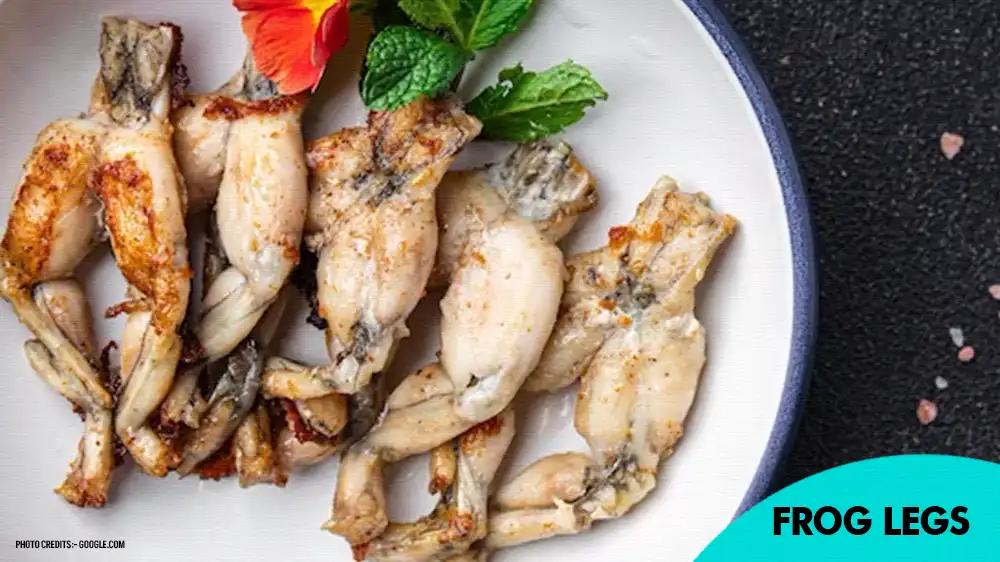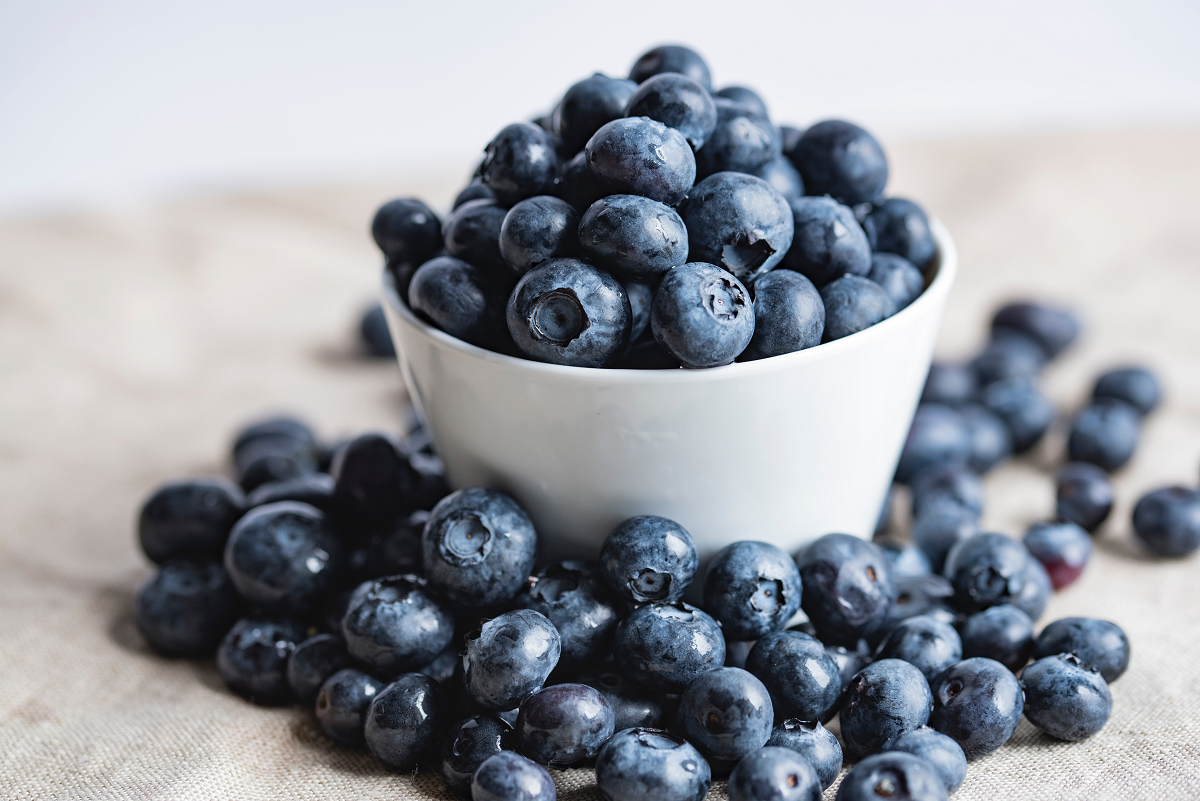
HEALTH BLOG
Frog Legs A Nutritious Delicacy for Your Health
-
Rahul Priydarss
Uncover the nutritional value and culinary versatility of frog legs in this insightful article. Learn about their high protein content, low fat profile, and potential health benefits. Explore cooking methods, recipes, and tips for incorporating frog legs into your diet. Delve into the world of gourmet dining and nutritious eating with frog legs as your new culinary adventure.
Introduction of Frog Legs:
Frog legs are a unique and cherished culinary delight that has found a place in various cuisines around the world. Renowned for their delicate flavor and tender texture, frog legs are particularly celebrated in French cuisine, where they are known as “cuisses de grenouille.” Beyond France, these amphibian appendages are also popular in regions such as Southeast Asia, the Caribbean, and parts of the Southern United States.
The allure of frog legs lies in their subtle, slightly sweet taste, often compared to a blend of chicken and fish. This versatile ingredient can be prepared in numerous ways, including frying, grilling, and sautéing, allowing chefs to infuse them with an array of flavors through different herbs and spices.
Not only are frog legs a gastronomic delight, but they also offer nutritional benefits. They are rich in protein and low in fat, making them a healthy option for those seeking to diversify their diet. However, the consumption of frog legs does come with environmental and ethical considerations, as the harvesting of frogs can impact local ecosystems. Therefore, sustainable and humane practices are encouraged in the sourcing of this unique delicacy.
What is Frog Legs:
Frog legs are a culinary dish made from the hind legs of frogs. They are especially popular in French cuisine, where they are known as “cuisses de grenouille.” Frog legs are also eaten in other parts of the world, including parts of Asia and the Southern United States.
The taste of frog legs is often compared to chicken or fish, with a texture similar to chicken wings. They are usually prepared by frying, grilling, or sautéing, and can be seasoned with various herbs and spices to enhance their flavor. In some cultures, frog legs are considered a delicacy and are served in fine dining restaurants.

Table of Contents
Nutritional Profile of Frog Legs:
Frog legs boast a commendable nutritional profile, making them an excellent addition to a balanced diet. Here’s a closer look at the macronutrients and micronutrients found in frog legs:
Macronutrient Composition: Frog legs are renowned for their high protein content, making them an ideal choice for individuals looking to boost their protein intake. Additionally, they are low in fat and calories, making them a suitable option for those watching their weight or aiming to maintain a healthy lifestyle.
Micronutrients and Vitamins: In addition to being rich in protein, frog legs contain essential vitamins and minerals that contribute to overall health and well-being. These include:
- Iron is important for oxygen transport and preventing iron deficiency anemia.
- Potassium Helps regulate blood pressure and maintain proper muscle function.
- B Vitamins Including B12, which is essential for nerve function and DNA synthesis.
Comparison with Other Protein Sources: Frog legs offer a unique blend of nutrients when compared to other protein sources, such as chicken or beef. They are lower in fat and calories than most meats while providing similar amounts of protein. Additionally, they contain fewer saturated fats, making them a heart-healthy protein option.
Frog legs aren’t just protein and fat; they also boast a range of essential nutrients that contribute to overall health. These include.
- Phosphorus: Necessary for strong bones and teeth.
- Vitamin A: Essential for vision, immune function, and cell growth.
- Zinc: Supports a healthy immune system and wound healing.
- Selenium: An important antioxidant that protects cells from damage.
High Protein Content in Frog Legs:
Protein is an essential macronutrient vital for various bodily functions, including muscle repair and growth. Frog legs are renowned for their high protein content, providing an ample supply of amino acids necessary for maintaining muscle mass and supporting weight management.
Importance of Protein in the Diet: Protein is often referred to as the building block of life due to its role in building and repairing tissues, including muscles, skin, and organs. It is also involved in various metabolic processes, enzyme production, and immune function. Consuming an adequate amount of protein is essential for supporting overall health and ensuring proper bodily functions.
Protein Content in Frog Legs Compared to Other Meats: Frog legs are known for their exceptionally high protein content. They contain comparable or even higher levels of protein than other commonly consumed meats, such as chicken, beef, and pork. This makes frog legs an excellent protein source for individuals looking to meet their dietary protein needs.
Benefits of Consuming High-Protein Foods for Muscle Health and Weight Management:
Consuming high-protein foods like frog legs offers several benefits for muscle health and weight management.
Muscle Repair and Growth: Protein is essential for repairing and building muscle tissues. Adequate protein intake is particularly important for individuals engaged in regular exercise or strength training, as it supports muscle recovery and promotes muscle growth.
Increased Satiety: Protein-rich foods are known to increase feelings of fullness and satiety, which can help control appetite and prevent overeating. Including frog legs in your meals can contribute to a greater sense of satisfaction and may aid in weight management efforts.
Metabolic Boost: Protein has a higher thermic effect compared to fats and carbohydrates, meaning it requires more energy to digest and metabolize. As a result, consuming high-protein foods can slightly increase energy expenditure, potentially supporting weight loss or weight maintenance efforts.

Frog legs Low in Fat:
Frog legs are not only protein-rich but also remarkably low in fat. Here’s why the low-fat content in frog legs is advantageous.
Significance of Low-Fat Diets: Low-fat diets have long been advocated for their potential health benefits, particularly in reducing the risk of cardiovascular disease and supporting weight management. By limiting the intake of dietary fats, individuals can lower their overall calorie intake, which may contribute to weight loss and improved metabolic health. Additionally, reducing saturated and trans fats can help lower LDL (bad) cholesterol levels and decrease the risk of heart disease.
Fat Content in Frog Legs Compared to Other Meats: Compared to other meats like beef, pork, and even chicken, frog legs contain significantly less fat. This makes them an excellent choice for individuals seeking to reduce their fat intake without sacrificing protein or flavor. While some meats can be high in saturated fats, which may negatively impact cardiovascular health, frog legs offer a lean and nutritious alternative.
Impact on Cardiovascular Health and Weight Control: The low fat content in frog legs has positive implications for cardiovascular health and weight control. Diets low in saturated and trans fats have been associated with a reduced risk of heart disease and stroke, as well as improved cholesterol levels. By incorporating low-fat protein sources like frog legs into their diet, individuals can support cardiovascular health while enjoying delicious and nutritious meals.
Potential Frog Legs Meat Benefits:
Consuming frog legs offers several potential health benefits beyond just providing nutrition. Here are some ways in which frog legs may positively impact your health.
Boosting Immune Function: Frog legs contain essential vitamins and minerals, such as vitamin A, vitamin C, and zinc, which are known to support immune function. These nutrients help strengthen the body’s defenses against infections and illnesses by promoting the production and activity of immune cells. Incorporating frog legs into your diet can bolster your immune system and enhance your body’s ability to fight off pathogens.
Supporting Bone Health: Frog legs are a good source of calcium, phosphorus, and other minerals that are essential for maintaining strong and healthy bones. Calcium is particularly important for bone density and strength, while phosphorus is crucial in bone formation and repair. Including frog legs in your diet can support bone health and reduce the risk of osteoporosis and fractures.
Enhancing Metabolism and Energy Levels: Protein is a key component of frog legs and is essential for maintaining muscle mass and supporting metabolic function. Consuming adequate protein can help enhance metabolism and energy levels by promoting muscle growth and repair. Additionally, the B vitamins found in frog legs play a vital role in energy metabolism, helping convert food into usable energy for the body. By enjoying frog legs as part of your meals, you can fuel your body with the nutrients it needs to stay energized and active throughout the day.
Cooking Methods and Recipes for Frog Legs:
Frog legs can be prepared in various ways to suit different tastes and preferences. Here are some popular cooking methods and recipes to help you enjoy this delicious delicacy.
Popular Ways to Prepare Frog Legs:
Grilling: Grilling frog legs impart a smoky flavor while keeping them tender and juicy. Simply marinate the frog legs in your favorite seasoning or marinade, then grill them over medium heat until cooked through.
Frying: Frying frog legs result in a crispy exterior and tender interior. Coat the frog legs in seasoned flour or breadcrumbs, then fry them in hot oil until golden brown and cooked through.
Baking: Baking frog legs is a healthier alternative to frying and produces moist and flavorful results. Season the frog legs with herbs, spices, and olive oil, then bake them in a preheated oven until they are cooked through and golden brown.
Healthy Cooking Techniques:
When preparing frog legs, consider using healthier cooking techniques to minimize added fats and calories.
Steaming: Steaming frog legs preserve their natural flavor and nutrients without adding extra fat. Simply place the frog legs in a steamer basket over boiling water and steam until cooked through.
Broiling: Broiling frog legs allows excess fat to drip away while achieving a crispy texture. Place the seasoned frog legs on a broiler pan and broil them in the oven until they are golden brown and cooked through.
Poaching: Poaching frog legs in broth or seasoned water results in tender and flavorful meat. Simmer the frog legs in liquid until they are cooked through, then serve them with your favorite sauce or seasoning.
Recipes Incorporating Frog Legs in Nutritious Dishes:
Garlic Butter Frog Legs: Sauté frog legs in garlic-infused butter until golden brown and cooked through. Serve them with a squeeze of lemon juice and a sprinkle of chopped parsley for a simple yet flavorful dish.
Herb-Crusted Frog Legs: Coat frog legs in a mixture of breadcrumbs, grated Parmesan cheese, and chopped fresh herbs. Bake them in the oven until crispy and golden brown. Serve with a side of roasted vegetables for a nutritious meal.
Spicy Stir-Fried Frog Legs: Marinate frog legs in a mixture of soy sauce, chili paste, and sesame oil. Stir-fry them with sliced bell peppers, onions, and garlic until cooked through. Serve over steamed rice for a spicy and satisfying dish.
Top 5 Frog Species for Eating and Their Delicious Legs:
Frogs are not just fascinating amphibians but also a delicacy enjoyed in many cuisines around the world. Here are the top five frog species known for their delicious legs.
American Bullfrog (Lithobates catesbeianus): Widely recognized for their large size and flavorful meat, American bullfrogs are one of the most popular species for frog leg consumption. Their tender and mild-tasting legs are often featured in various dishes, from fried frog legs to grilled delicacies.
European Common Frog (Rana temporaria): Found across Europe, the European common frog is renowned for its succulent legs, which are favored for their delicate flavor and tender texture. These frogs are commonly enjoyed in French cuisine, where they are prepared in classic dishes like frog leg Provençal.
Asian Painted Frog (Kaloula pulchra): Native to Southeast Asia, the Asian painted frog is prized for its meaty legs, which are known for their rich taste and firm texture. In countries like Thailand and Vietnam, frog legs are a popular ingredient in soups, stir-fries, and curries, showcasing their versatility in Asian cuisine.
Giant River Frog (Limnonectes leporinus): As the name suggests, the giant river frog is one of the largest frog species, known for its sizable and flavorful legs. Found in regions of Southeast Asia, including Thailand and Indonesia, giant river frogs are often hunted for their meat, which is enjoyed in a variety of dishes.
African Clawed Frog (Xenopus laevis): Native to sub-Saharan Africa, the African clawed frog is valued for its meaty legs, which offer a unique taste and texture. While primarily kept as pets or used in scientific research, African clawed frogs are also consumed in some African countries, where they are considered a delicacy.
FAQs about Frog Legs:
A1: Frog legs are safe to eat when sourced from reputable suppliers and cooked properly. However, individuals with amphibian allergies should exercise caution.
A2: Frog legs have a mild, slightly sweet flavor reminiscent of chicken or fish, depending on the cooking method and seasonings used.
A3: Most people can safely consume frog legs, but individuals with amphibian allergies or dietary restrictions should avoid them. Additionally, cultural and personal preferences may influence consumption.
A4: While frog legs are considered a delicacy in many cultures, some individuals or communities may have cultural or religious beliefs that prohibit their consumption.
A5: High-quality frog legs can be found at specialty markets, seafood shops, and reputable online suppliers. It’s essential to choose suppliers that prioritize sustainability and ethical farming practices.

-Please remember, to always consult with healthcare professionals or Doctors for personalised advice related to medical conditions.
Conclusion:
In summary, frog legs are not just a culinary delight but also a nutritional gem. Their versatility in cooking methods makes them a flavorful addition to any meal while preserving their health benefits. Whether grilled, fried, or baked, frog legs offer a unique dining experience that nourishes both body and soul. With their high protein content, essential vitamins, and minerals, frog legs contribute to overall health and well-being. So, consider adding frog legs to your menu for a delicious and nutritious boost to your diet. Experience the joy of culinary exploration with frog legs a delicacy that tantalizes the taste buds and supports a healthy lifestyle.




